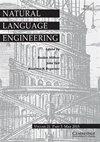Urdu paraphrase detection: A novel DNN-based implementation using a semi-automatically generated corpus
IF 1.9
3区 计算机科学
Q3 COMPUTER SCIENCE, ARTIFICIAL INTELLIGENCE
引用次数: 0
Abstract
Automatic paraphrase detection is the task of measuring the semantic overlap between two given texts. A major hurdle in the development and evaluation of paraphrase detection approaches, particularly for South Asian languages like Urdu, is the inadequacy of standard evaluation resources. The very few available paraphrased corpora for these languages are manually created. As a result, they are constrained to smaller sizes and are not very feasible to evaluate mainstream data-driven and deep neural networks (DNNs)-based approaches. Consequently, there is a need to develop semi- or fully automated corpus generation approaches for the resource-scarce languages. There is currently no semi- or fully automatically generated sentence-level Urdu paraphrase corpus. Moreover, no study is available to localize and compare approaches for Urdu paraphrase detection that focus on various mainstream deep neural architectures and pretrained language models. This research study addresses this problem by presenting a semi-automatic pipeline for generating paraphrased corpora for Urdu. It also presents a corpus that is generated using the proposed approach. This corpus contains 3147 semi-automatically extracted Urdu sentence pairs that are manually tagged as paraphrased (854) and non-paraphrased (2293). Finally, this paper proposes two novel approaches based on DNNs for the task of paraphrase detection in Urdu text. These are Word Embeddings n-gram Overlap (henceforth called WENGO), and a modified approach, Deep Text Reuse and Paraphrase Plagiarism Detection (henceforth called D-TRAPPD). Both of these approaches have been evaluated on two related tasks: (i) paraphrase detection, and (ii) text reuse and plagiarism detection. The results from these evaluations revealed that D-TRAPPD ( $F_1 = 96.80$ for paraphrase detection and $F_1 = 88.90$ for text reuse and plagiarism detection) outperformed WENGO ( $F_1 = 81.64$ for paraphrase detection and $F_1 = 61.19$ for text reuse and plagiarism detection) as well as other state-of-the-art approaches for these two tasks. The corpus, models, and our implementations have been made available as free to download for the research community.乌尔都语释义检测:一种新的基于dnn的实现,使用半自动生成的语料库
自动释义检测是测量给定文本之间语义重叠的任务。开发和评估释义检测方法的一个主要障碍,特别是对于乌尔都语等南亚语言,是标准评估资源的不足。这些语言的极少数可用的意译语料库是手动创建的。因此,它们被限制在较小的尺寸上,并且不太适合评估主流的数据驱动和基于深度神经网络(dnn)的方法。因此,有必要为资源稀缺的语言开发半自动或全自动的语料库生成方法。目前还没有半自动或全自动生成的句子级乌尔都语释义语料库。此外,目前还没有针对各种主流深度神经结构和预训练语言模型的乌尔都语释义检测方法进行本地化和比较的研究。本研究通过提出一种半自动管道生成乌尔都语意译语料库来解决这一问题。它还提供了使用所建议的方法生成的语料库。该语料库包含3147个半自动提取的乌尔都语句子对,这些句子对被手动标记为释义(854)和非释义(2293)。最后,本文提出了两种基于深度神经网络的乌尔都语文本释义检测方法。它们是词嵌入n图重叠(以后称为WENGO)和一种改进的方法,深度文本重用和释义抄袭检测(以后称为D-TRAPPD)。这两种方法都在两个相关的任务上进行了评估:(i)释义检测,(ii)文本重用和抄袭检测。结果表明,D-TRAPPD(释义检测$F_1 = 96.80美元,文本重用和抄袭检测$F_1 = 88.90美元)在这两项任务上优于WENGO(释义检测$F_1 = 81.64美元,文本重用和抄袭检测$F_1 = 61.19美元)和其他最先进的方法。语料库、模型和我们的实现已经免费提供给研究社区下载。
本文章由计算机程序翻译,如有差异,请以英文原文为准。
求助全文
约1分钟内获得全文
求助全文
来源期刊

Natural Language Engineering
COMPUTER SCIENCE, ARTIFICIAL INTELLIGENCE-
CiteScore
5.90
自引率
12.00%
发文量
60
审稿时长
>12 weeks
期刊介绍:
Natural Language Engineering meets the needs of professionals and researchers working in all areas of computerised language processing, whether from the perspective of theoretical or descriptive linguistics, lexicology, computer science or engineering. Its aim is to bridge the gap between traditional computational linguistics research and the implementation of practical applications with potential real-world use. As well as publishing research articles on a broad range of topics - from text analysis, machine translation, information retrieval and speech analysis and generation to integrated systems and multi modal interfaces - it also publishes special issues on specific areas and technologies within these topics, an industry watch column and book reviews.
 求助内容:
求助内容: 应助结果提醒方式:
应助结果提醒方式:


